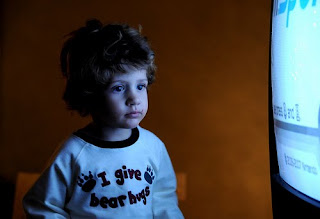As a social psychologist in Media and Communications, Professor Livingstone explores the relationships humans have with technology and in a particular focuses the impact of the Internet and importance of media literacy. Her academic research and publications is enriched by her involvement as an advocate for media literacy especially for children and youth (to learn more about her check out her website:
Livingstone’s article examines at how the Internet and new media is shaping the activities of the youth in the home as well as altering the traditional views of childhood of modern Western cultures (2005). She notes that technology has played an important role in blurring divisions between work, leisure and communication (e.g., being in contact all the time, instant relay of news, working remotely across time zones). These changes to society have caused cultural or traditional norms to be “re-negotiated”(Livingstone, 2005, p.3) including:
• the definition of childhood;
• the importance of children as consumers
• the privacy and safety of children in the home;
• the children’s interactions with family and friends; and
• the responsibilities of guardian and society, in general, to young people.
• the definition of childhood;
• the importance of children as consumers
• the privacy and safety of children in the home;
• the children’s interactions with family and friends; and
• the responsibilities of guardian and society, in general, to young people.
Livingstone adapted the critical theory of four spheres (economy, public, state and personal) developed by Habermas (2005, p. 3). These intersecting spheres represents different areas of society and each one affects children’s use of technology to navigate between public and private spaces. Livingstone’s framework only used three of the spheres but she merged personal with each of them to form: “economy/personal, public/personal, state/personal” (2005, p. 3). This decision stemmed from the importance given to individuality and personal experience in the public sectors of the 21st century (Livingstone, 2005).
Economy/Personal Sphere
Internet in the home has brought with it opportunities for children to create content and then share it with others online. Currently, children are regarded and treated as powerful consumers who often have expertise in using new media. New media companies provide children with technology (tools and virtual spaces) to create individualized content (profiles, blogs, websites, videos, art) and share it publicly online or with their peers.
However, Commercial enterprises also use the Internet to gather information on children as consumers. Children end up sharing private or personal information online with their friends but don’t always realize they are providing companies with demographic and qualitative data about their lives. This data is analyzed by companies to market more effectively to young consumers. The Media and businesses use it to influence on young people's perceptions of themselves and commercial products (Livingstone, 2005). It is important for both children and adults to have the media literacy skills to objectively examine what is presented to them and if the online content they find is accurate.
Public/Personal Sphere
Internet and new media gives kids to interact with their peers, family and the general public on both local or international levels. This freedom from distance and time is important because young people have so many more restrictions for their interactions with the wider world (Livingstone, 2005). It used to be that children would play out in the parks or neighbourhood streets but now you’re more likely to find them at home on the Internet or playing video games. On the Internet, they can find lots of online spaces where they can meet new people and become parts of communities without the same watchful restrictions (depending on the guardians). Parents used to view the home as the safe space from the public but the Internet allows youth to access the outside world from their bedrooms so there are new negotiations that are necessary between parents, children and technology in the home.
Internet and new media gives kids to interact with their peers, family and the general public on both local or international levels. This freedom from distance and time is important because young people have so many more restrictions for their interactions with the wider world (Livingstone, 2005). It used to be that children would play out in the parks or neighbourhood streets but now you’re more likely to find them at home on the Internet or playing video games. On the Internet, they can find lots of online spaces where they can meet new people and become parts of communities without the same watchful restrictions (depending on the guardians). Parents used to view the home as the safe space from the public but the Internet allows youth to access the outside world from their bedrooms so there are new negotiations that are necessary between parents, children and technology in the home.
source: http://bit.ly/3TcrOI
State/Personal Sphere
This sphere deals with governance on a state and personal level. Technology is moving so fast that it’s nearly impossibly for legislation and political governance to keep up (Livingstone, 2005). It’s also dependent on where the responsibility falls for “protecting” the young. Should it be the state or the adult authority in children’s every day lives?
The key importance is to give youth, guardians and educators tools to critically assess the information and the ways it is presented on the Internet (Livingstone, 2005). These media literacy skills will influence the choices they will have to make on presenting or sharing information about themselves.
This sphere deals with governance on a state and personal level. Technology is moving so fast that it’s nearly impossibly for legislation and political governance to keep up (Livingstone, 2005). It’s also dependent on where the responsibility falls for “protecting” the young. Should it be the state or the adult authority in children’s every day lives?
The key importance is to give youth, guardians and educators tools to critically assess the information and the ways it is presented on the Internet (Livingstone, 2005). These media literacy skills will influence the choices they will have to make on presenting or sharing information about themselves.
Livingstone stresses the importance of actually accessing youth as a group to learn from otherwise will miss out on finding out about the less obvious behaviours – peer interactions, mirrored profiles, and the hidden privacy. She strives for a balanced presentation of the pros and cons of children’s access to the Internet in the home. It’s not all panic and darkness but it’s also important to approach the interactions with the Internet with awareness rather than naïveté.









Hi Kate! First off, I agree with your sentiments and analysis of Livingstone’s article. I also really enjoyed your presentation.
ReplyDeleteThere are two things that I would like to address regarding Livingstone’s article that weren’t brought up in class. Firstly, I completely agree with her positioning of children as active consumers. The ever-increasing youth and children’s market is highly lucrative. Borrowing from a paper that I presented at last year’s ACCUTE/Congress conference, my findings directly address what Livingstone believes:
Several theorists, including Gary Ruskin, argue against the use of advertisements
that directly target children. In his article entitled “Why They Whine: How Corporations Prey on Our Children,” Ruskin demonstrates the apparent shift in how children are now viewed by corporations. Instead of being considered as “vulnerable beings to be nurtured,” marketers only see children through an “economic lens” (Ruskin 2). And although advertisements targeting children have been in existence for a number of years, Ruskin’s article reveals that today’s corporations now include personnel whose jobs entail “molding” children into life-long brand-loyal consumers in order to take advantage of the children’s market; a $24.4 billion “primary” market and a $300 million “influence” market. The primary market is described as “what kids directly control and spend” and the influence market is referred to as “the amount of parental spending that children can directly or indirectly influence” (2).
Furthermore, Livingstone gestures towards the “conflation” between citizenship and consumerism. But what about consumer citizenship itself? Is it really a conflation or the emergence of a new “category” or type of citizenship?
After analyzing the NeoPets website, I posited the following: As opposed to teaching children positive morals, values and ideals, materialism alone is instead encouraged by advertisers. Sarah Banet-Weiser argues that this type of situation is indicative of the contemporary moment, as “the market is understood as constitutive of citizenship through the interpellation of children, and this interpellation of children is about making subjects for the market” (7).
Also, Henry Giroux considers the rise of corporate culture as having contributed to “children relinquishing their roles as critical subjects for the passive role of consuming subjects” (23).
Without question, the seemingly endless increase of corporate strategies that are specifically geared towards targeting children as consumers requires further investigation, if nothing else.
Peace!
R
We had a really interesting and lively class discussion on the topic of boundaries and the changes in how children are using their playtime at home and in the schoolyard.
ReplyDeleteHave the changes been brought about mainly by the introduction of technology and the way children are using it? We do not notice how technology creeps in and we accept it now without too much thought.
Livingstone's article outlines several areas which she noted as 'blurring boundaries', those of work/leisure, entertainment/education, local/global, citizen/consumer and adult/child.
The Internet makes nearly everything easily accessible, distance is no longer a problem. Access can be made with a few keystokes, and while this is very helpful for some it can be a problem when monitoring young people. IM and texting make everything immediate, no waiting, no time for slow down and thinking about topics so the consumer(adult or child) expects instant gratification.
Todays children are not able to have the freedom that used to be the norm, no more playing in the backyard without supervision, no more going to the park without a parent, we are very aware of the dangers that are ever present. This is restricting for young people, so they turn to the outlet of mobile phone, IM and the Internet, where they are less easy to control and have more freedom.
Hi Guys!
ReplyDeleteAs has been brought up in class, I think we often have a way of romanticizing the past. Gearing marketing to children in order to create 'life-long brand-loyal consumers' is not a new phenomenon (cigarette companies have a long history of this), just think about Popeye 'Candy Sticks'.
Corporations do indeed take advantage of new media to further their economic interests, but this has not and is not going to change. If anything, we will only become more and more bombarded by advertisements as new technologies emerge. As such, the responsibility of teaching children critical thinking skills falls to the parent. Unfortunately, this is easier said then done. Research is needed to develop positive strategies for teaching kids critical thinking skills at a younger age. For some reason I always think of Atticus Finch from "To Kill a Mockingbird" when this discussion comes up ;)